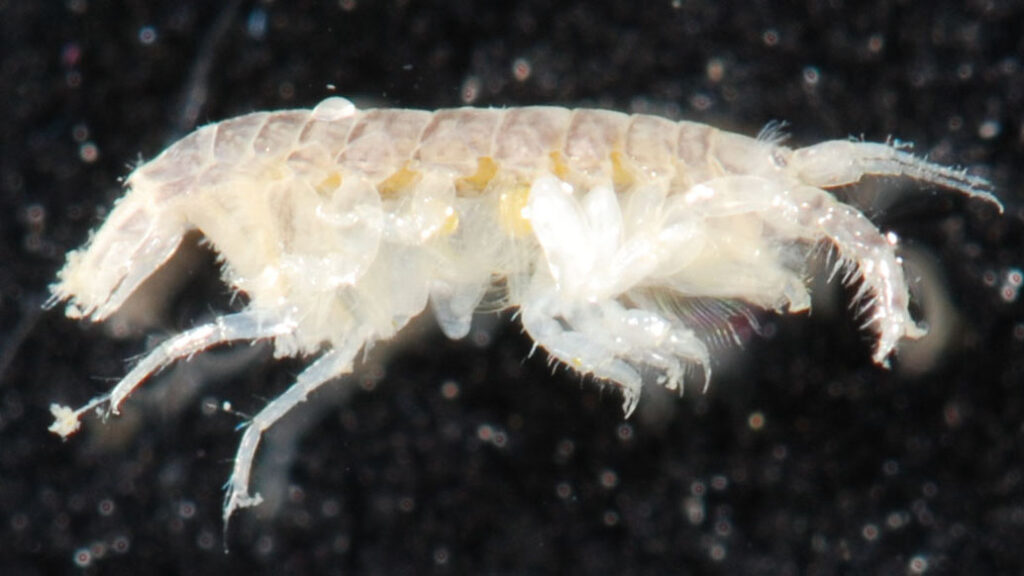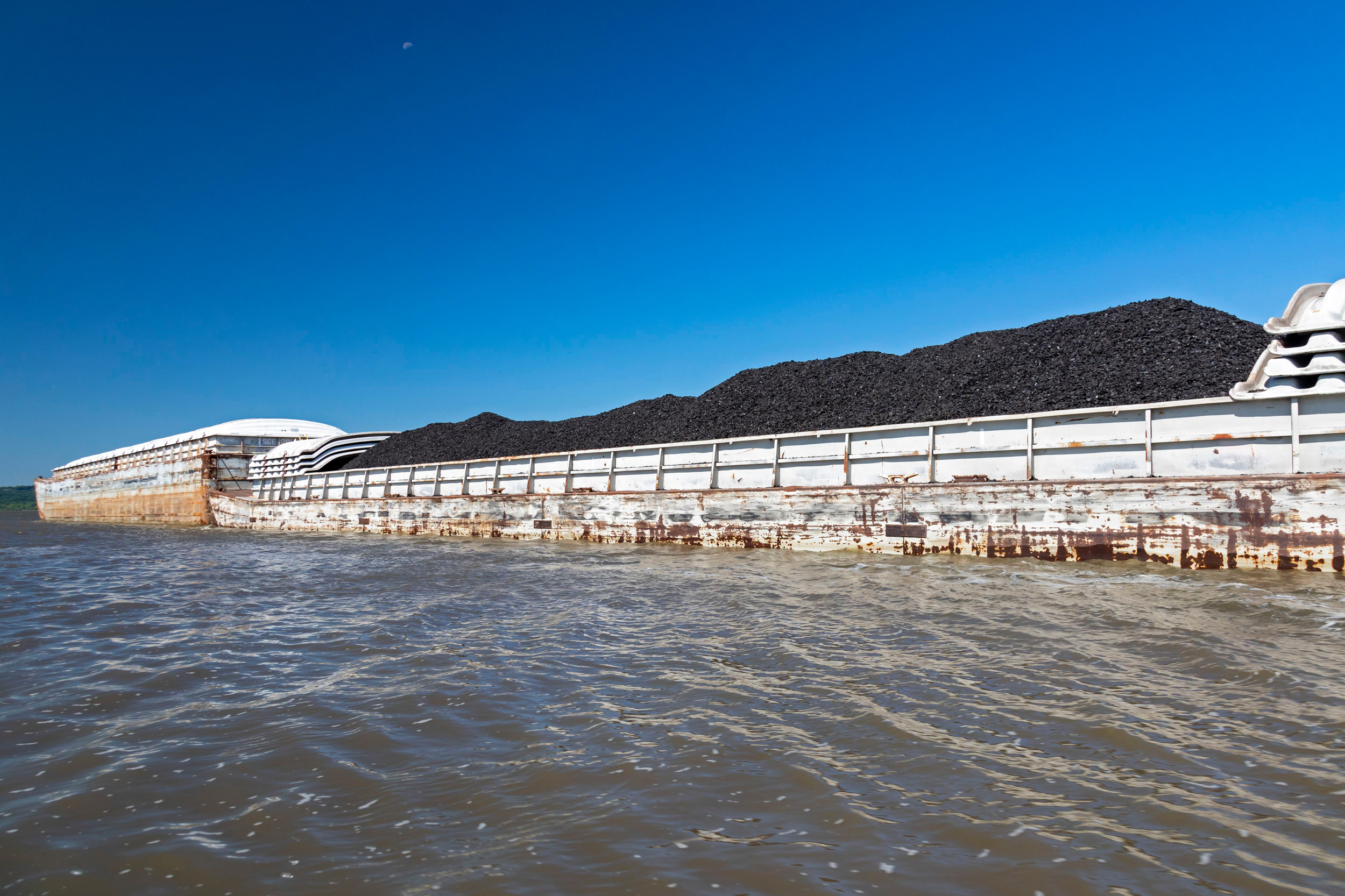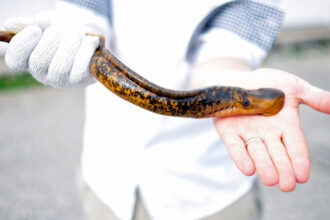Through the murky waters of the Illinois River, scud have been moving steadily toward Lake Michigan. Scientists suggest the tiny crustaceans, an invasive species known as Apocorophium lacustre, pose a big threat to the lake’s ecosystem—but so far, pollution has hindered their spread.
As water quality in the area improves, following decades of work to clean up the Illinois River and other bodies of water near Chicago, authors of a recent study analyzing barriers preventing the invasion of A. lacustre, published in the journal Biological Invasions, suggest additional techniques for managing the species might be necessary.
“For us as biologists, obviously, water quality getting better is the best thing we could possibly hear,” said John Bieber, co-author of the study and a biologist at Loyola University Chicago. “But if we see that the water quality is good enough now for [scud] to be able to work their way closer to Lake Michigan, then that definitely does become a more pressing concern.”

Scud is a general term for the small crustaceans common in aquatic environments around the world. While there are some varieties of scud native to Lake Michigan and Illinois’ waterways, A. lacustre is an invasive species. From its native range on the Atlantic coast, scientists believe the species made its way up the Mississippi River and into the Illinois River by 2003. They are worried, if it reaches Lake Michigan, it could replace vital native species at the bottom of the food chain, with cascading effects on the diets of other aquatic species—all the way up the chain to salmon and other game fish.
A. lacustre has not yet been observed upstream of the Dresden Island Pool, the waters behind a lock and dam system that guides boats toward Chicago and Lake Michigan, approximately 100 river kilometers away. To understand why, the study authors conducted experiments to see how different water conditions changed the species’ movement and behavior.
First, researchers tested how scud reacted in waters from the Chicago Sanitary and Ship Canal (CSSC), a waterway containing treated and untreated sewage, as well as runoff from the industrialized city. About 35 percent of A. lacustre exposed to this water did not survive, and researchers suggest in-situ scud would likely choose to stay downstream in less polluted waters, if given the chance.
Researchers also tested how two invasive species barriers might impact the species’ spread. They simulated the CSSC’s “electric fence” system, which has been in operation since 2002, creating an electric field in the water to prevent larger invasive species, such as carp, from breaching Lake Michigan. However, researchers found this electric barrier caused little change in scud’s behavior, except at 300 percent and 400 percent of the electric field strength currently used in the CSSC.
Similarly, when researchers simulated a proposed CO2 barrier—which would increase CO2 levels in the CSSC to prevent invasive species from passing through—they found impacting scud would require much higher levels of added CO2 than is currently allowed by the U.S. Environmental Protection Agency.
“There hasn’t been a lot of work with scud,” Bieber explained. “This is a first step effort to be able to understand how an amphipod, like scud, can respond.”
While research of these organisms is still in its early days, their small size means their spread is difficult to detect and time is of the essence for learning more about them. Brandon Harris, a large river fisheries ecologist at the Illinois Natural History Survey, notes these tiny creatures can travel, relatively undetected, across large distances by hitching rides on vessel hulls or in ballast water.
To prevent scud and other invasive species from traveling this way, the United States and Canada have implemented a variety of regulations governing how and where trans-oceanic ships should empty their ballast water, but it’s still possible for small species to slip through.
“It’s a lot harder to see a small amphipod than it is, maybe, a fish,” said Harris, who was not involved in the study. “When they’re small like that, they pose a lot more issues.”
These issues are especially salient as the waterways around Chicago are finally getting cleaner after decades of restoration efforts. In late September, for the first time in nearly a century, the Chicago River hosted its first organized swim after the once-toxic waters were deemed safe and clean.
Downstream from the city, similar strides have been made. Since civil engineers reversed the flow of the Chicago River in 1900, sending the city’s polluted waters away from Lake Michigan, the Illinois River has faced high levels of pollution. Over time, local cleanups and regulatory changes, such as the Clean Water Act of 1972, have helped improve the health of the river and its ecosystems.
“You’re technically able to eat a fish that was born in the Chicago River, and that is an incredible win,” said Lindsay Keeney, chief program officer for conservation and agriculture at the Illinois Environmental Council. “But the win is the pattern … it’s going to continue to get healthier.”
Although Keeney acknowledges invasive species thrive in the same clean water that native species do, she explains pollution is “not something that we want to rely on.” Instead, the most effective strategy for keeping invasive species away is supporting healthy, resilient ecosystems with natural predators and abundant prey.
By continuing to clean the waterways and protecting regulatory frameworks—at the local, state, and federal levels—that mitigate pollution, scientists hope ecosystems will be robust and healthy enough to manage the threats posed by scud. And while these cleanups are underway, scientists are carrying on with their work to learn about scud, and what might stop them.
“While it’s unrealistic to kind of be able to create a catch all system, being able to identify and being able to show the different ways that these barriers are able to impact [scud], I feel is a critical management effort,” Bieber said.
About This Story
Perhaps you noticed: This story, like all the news we publish, is free to read. That’s because Inside Climate News is a 501c3 nonprofit organization. We do not charge a subscription fee, lock our news behind a paywall, or clutter our website with ads. We make our news on climate and the environment freely available to you and anyone who wants it.
That’s not all. We also share our news for free with scores of other media organizations around the country. Many of them can’t afford to do environmental journalism of their own. We’ve built bureaus from coast to coast to report local stories, collaborate with local newsrooms and co-publish articles so that this vital work is shared as widely as possible.
Two of us launched ICN in 2007. Six years later we earned a Pulitzer Prize for National Reporting, and now we run the oldest and largest dedicated climate newsroom in the nation. We tell the story in all its complexity. We hold polluters accountable. We expose environmental injustice. We debunk misinformation. We scrutinize solutions and inspire action.
Donations from readers like you fund every aspect of what we do. If you don’t already, will you support our ongoing work, our reporting on the biggest crisis facing our planet, and help us reach even more readers in more places?
Please take a moment to make a tax-deductible donation. Every one of them makes a difference.
Thank you,













